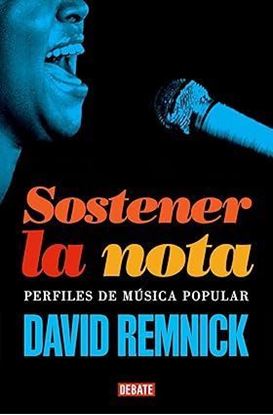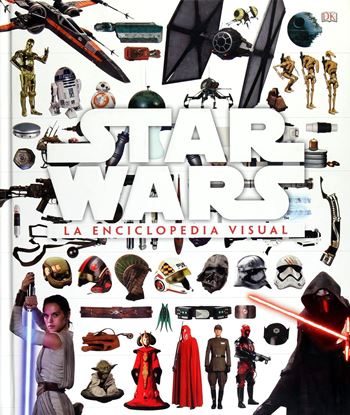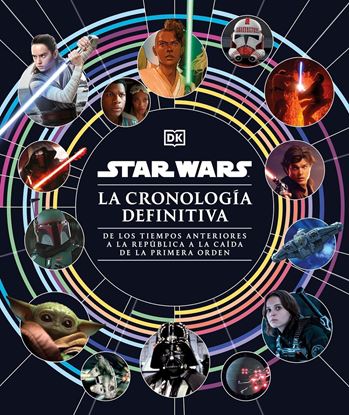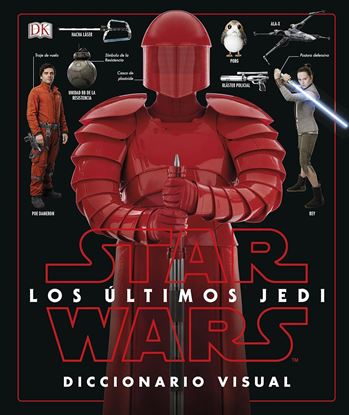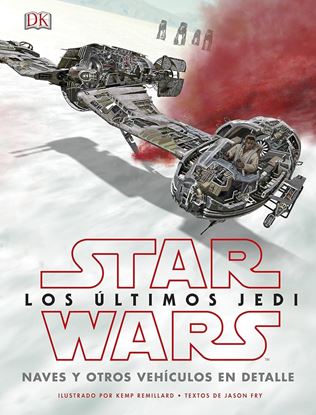

SOSTENER LA NOTA
Desde el debut de Leonard Cohen, cuando su miedo escenico le impedía terminar "Suzanne", hasta la icónica caída del abrigo de visón de ArethaFranklin en el Kennedy Center mientras Barack y Michelle Obama aplaudían efusivamente. En Sostener la nota, el legendario director de la revista The New Yorker, David Remnick, reúne sus escritos sobre algunos de los músicos, compositores e interpretes más famosos del mundo con vocación de entender cómo han pervivido en el tempo y en el tiempo las mayores y más populares voces del último siglo en Estados Unidos.
Ganador de un premio Pulitzer por La tumba de Lenin, Remnick toma como hilo conductor las fulgurantes y longevas carreras de los mayores iconos musicales del planeta (Patti Smith, Mavis Staples, Paul McCartney, Bruce Springsteen, Buddy Guy…) para entregar una reflexión magistral sobre el exito, el fracaso, el estrellato, el relevo generacional y el ocaso profesional. Este bestseller, que recoge con gracia
1,650
STAR WARS LA ENCICLOPEDIA VISUAL
Todos los secretos de la cultura, la ciencia, la tecnología en la geografía Star Wars™ mostrados de forma completamente visual en una galería de más de 2500 imágenes.
Este volumen cubre personajes, criaturas, planetas, vehículos, armas y tecnología entre otros muchos aspectos con explicaciones detalladas e increíbles detalles.
Con un recorrido por la historia política en la galaxia Star Wars, desde el Consejo Jedi al Imperio, cada sección de este libro en español de Star Wars se centra en diferentes temas prestando especial atención a los detalles de la saga sin importar lo pequeños que sean. Un libro imprescindible en la biblioteca de todos los fans de la saga.
- Recorre y explora toda la geografía de la galaxia
- Conoce todas las criaturas, especies animales y vegetales que habitan la galaxia
- Sumérgete en la historia y política galáctica
- Adéntrate en la cultura y las costumbres de la galaxia
- Descubre todo sobre las naves Star Wars y la tecnología galáctica
Todo ello en este libro de tapa dura de Star Wars, completamente visual.
1,995
STAR WARS. EL GRAN LIBRO DE LA GALAXIA
Repleto de información y con más de 1500 imágenes alucinantes, este libro muestra todos los personajes, principales y secundarios, incluyendo a la Princesa Leia y a Luke Skywalker, además del resto de criaturas, vehículos, armas, accesorios y tecnologías con detalles sin igual.
La enorme cantidad de información visual que se nos ha vislumbrado en las películas de Star Wars ahora en formato de lectura. Detente a observar en detalle cómo eran los héroes y villanos que pilotaban naves estelares llenas de instrumentos; alienígenas con armas únicas, e historias de varias culturas reflejadas en la arquitectura de muchos mundos.
Han pasado muchas cosas desde la publicación del primer diccionario visual de Star Wars, y esta guía revisada y ampliada arroja luz incluso sobre más detalles de esa galaxia. La República, los Separatistas, la Orden Jedi, los Sith, el Imperio, la Alianza Rebelde, la Nueva República, la Primera Orden, la Resistencia, las guerras de las galaxias, gobiernos, líderes e imperios; todo ello explicado en este gran diccionario visual de Star Wars.
Además, este libro de Star Wars está organizado por películas y esta edición actualizada incluye las historias y personajes de Star Wars El Despertar de la Fuerza y Star Wars Los últimos Jedi.
Star Wars. El gran libro de la galaxia es el regalo ideal para cualquier fan de la saga Star Wars, desde niños de 12 años hasta adultos interesados en conocer todos los detalles que hacen del universo Star Wars algo tan especial.
2,300
STAR WARS. LA CRONOLOGIA DEFINITIVA
Un compañero indispensable para todos los seguidores de Star Wars, este libro muestra líneas de tiempo visuales que describen cronológicamente eventos, personajes y acontecimientos clave.
Rastrea conflictos cruciales, sigue la espada láser de Skywalker a medida que pasa de generación en generación, sé testigo de la evolución del icónico caza TIE a lo largo de diferentes épocas, indaga enlos planes de la Estrella de la Muerte a lo largo de los años y descubre múltiples líneas de tiempo que explican importantes batallas.
2,300
STAR WARS. ULTIMO JEDI DICCIONARIO VISUA
El Diccionario Visual de Star Wars. Los últimos Jedi presenta a todos los personajes, criaturas, droides, localizaciones y tecnología de la película.
Con más de un centenar de imágenes e información de la mano de Pablo Hidalgo, creador de contenidos de Star WarsTM, es un libro imprescindible para todos aquellos fans que quieren ir más allá de la experiencia cinematográfica.
1,350
STAR WARS. ULTIMOS JEDI NAVES Y OTROS
Este fantástico libro muestra por dentro trece vehículos de la película Star Wars. Los últimos Jedi.
Cada vehículo se ilustra a todo color y va acompañado de leyendas que describen todos sus rasgos relevantes.
Estas ilustraciones, junto con un exhaustivo texto, hacen de este volumen una de las mejores guías para la nueva incursión en la galaxia Star Wars.
1,350

